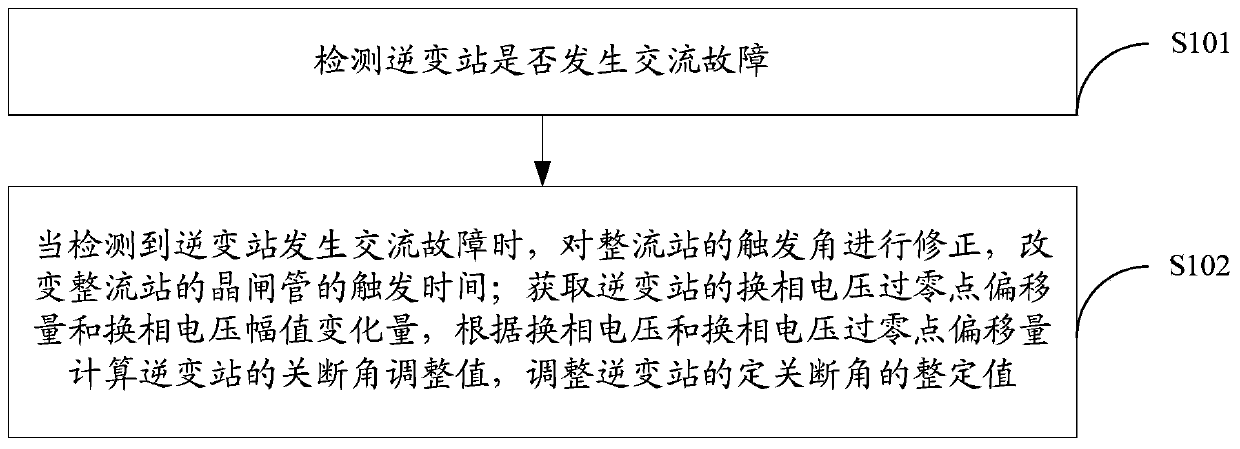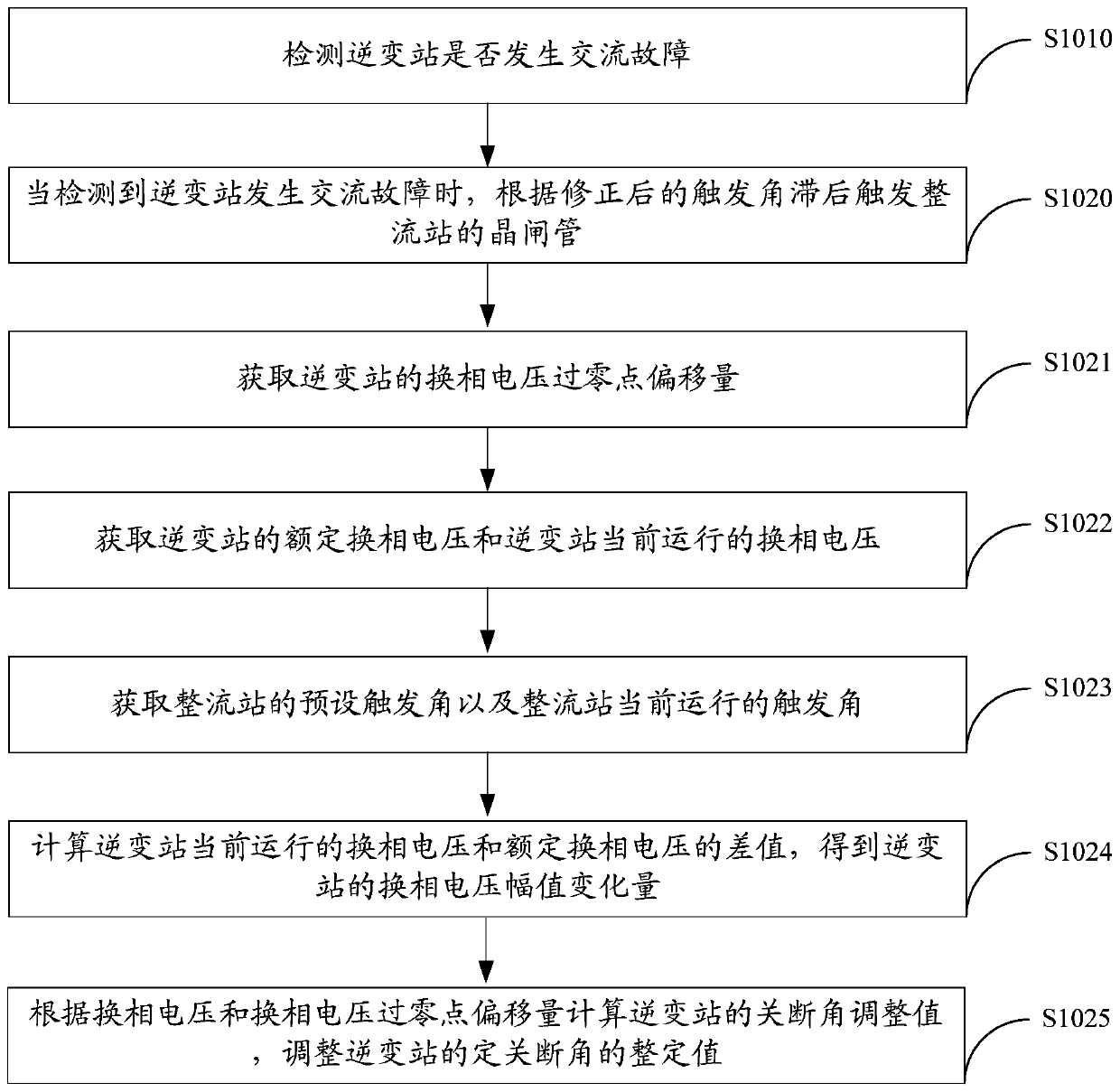A control optimization method and device for suppressing commutation failure of HVDC transmission
A high-voltage DC transmission and commutation failure technology, which is applied in the field of power transmission and distribution, can solve the problems that the trigger angle control output does not meet the commutation requirements and the high risk of commutation failure, so as to improve the system fault recovery ability and reduce commutation failure Probability of Occurrence Effect
- Summary
- Abstract
- Description
- Claims
- Application Information
AI Technical Summary
Problems solved by technology
Method used
Image
Examples
Embodiment 1
[0043] Embodiment 1. The embodiment of the present invention provides a control optimization method for suppressing HVDC commutation failure, such as figure 1 Shown include:
[0044] S101. Detect whether an AC fault occurs in the inverter station.
[0045] S102. Correcting the firing angle of the rectifying station and changing the firing time of the thyristors of the rectifying station when an AC fault occurs in the inverter station is detected.
[0046] Obtain the commutation voltage zero-crossing offset and commutation voltage amplitude change of the inverter station, calculate the cut-off angle adjustment value of the inverter station according to the commutation voltage and the commutation voltage zero-crossing offset, and adjust the inverter station The setting value of the fixed turn-off angle.
[0047] It should be noted that in actual applications, the cut-off angle setting value is calculated as an output, which is superimposed on the setting value of the inverter ...
Embodiment 2
[0049] Embodiment 2. The embodiment of the present invention provides a control optimization method for suppressing commutation failure of HVDC transmission, such as figure 2 Shown include:
[0050] S1010. Detect whether an AC fault occurs in the inverter station.
[0051] It should be noted that in actual applications, the method used to judge whether an AC fault occurs in the inverter station is the voltage sine and cosine component detection method; wherein, when there is no AC fault in the inverter station, the rectifier station operates according to preset parameters, and the inverter station The substation always adjusts the setting value of the fixed off angle.
[0052] Preferably, in S102, when an AC fault occurs in the inverter station, correct the trigger angle of the rectifier station, and change the trigger time of the thyristors in the rectifier station; obtain the commutation voltage zero-crossing point offset and commutation The variation of the voltage ampli...
Embodiment 3
[0073] Embodiment 3. The embodiment of the present invention provides a control optimization device 10 for suppressing commutation failure of HVDC transmission, such as Figure 5 Shown include:
[0074] The fault detection unit 101 is configured to detect whether an AC fault occurs in the inverter station.
[0075] The control unit 102 is configured to correct the trigger angle of the rectifier station and change the trigger time of the thyristors of the rectifier station when the fault detection unit 101 detects that an AC fault occurs in the inverter station.
[0076] The data acquiring unit 103 acquires the commutation voltage zero-crossing offset and the commutation voltage of the inverter station.
[0077] The processing unit 104 is used to calculate the cut-off angle adjustment value of the inverter station according to the commutation voltage obtained by the data acquisition unit 103 and the offset of the zero-crossing point of the commutation voltage, and adjust the s...
PUM
 Login to View More
Login to View More Abstract
Description
Claims
Application Information
 Login to View More
Login to View More - R&D
- Intellectual Property
- Life Sciences
- Materials
- Tech Scout
- Unparalleled Data Quality
- Higher Quality Content
- 60% Fewer Hallucinations
Browse by: Latest US Patents, China's latest patents, Technical Efficacy Thesaurus, Application Domain, Technology Topic, Popular Technical Reports.
© 2025 PatSnap. All rights reserved.Legal|Privacy policy|Modern Slavery Act Transparency Statement|Sitemap|About US| Contact US: help@patsnap.com



